Lewin Benjamin (ed.) Genes IX
Подождите немного. Документ загружается.

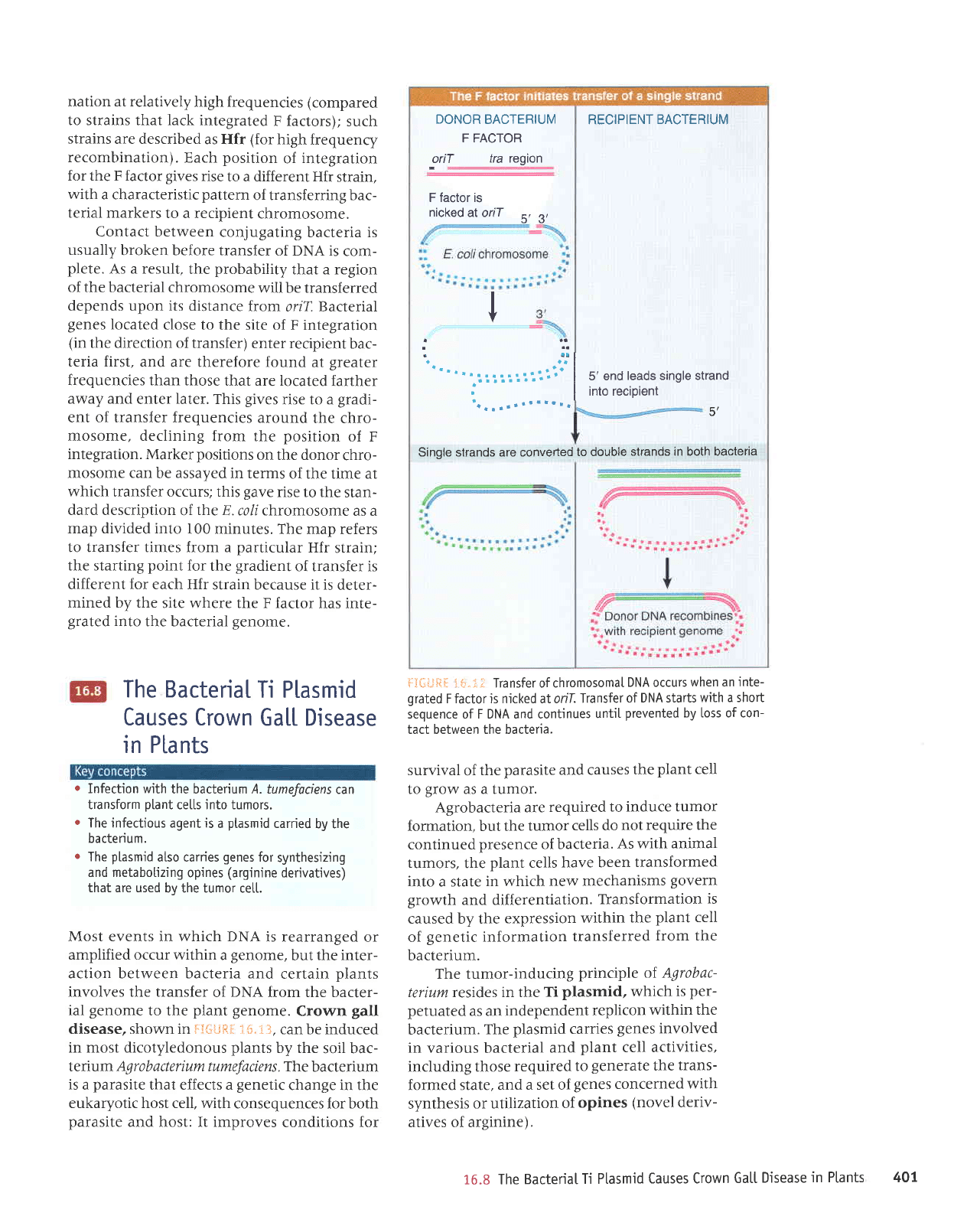
nation at relatively
high frequencies (compared
to strains that lack integrated
F factors);
such
strains are described
as Hfr
(for
high
frequency
recombination).
Each
position
of
integration
for the F factor
gives
rise
to a different
Hfr strain,
with
a characteristic
pattern
of transferring bac-
terial markers
to a recipient
chromosome.
Contact between
conjugating
bacteria is
usually
broken before transfer
of DNA is
com-
plete.
As a result,
the
probability
that a region
of the bacterial
chromosome
will be transferred
depends upon its distance
from
oriT. Bacterial
genes
located
close to the
site of F integration
(in
the direction of transfer)
enter recipient
bac-
teria first,
and are therefore
found at
greater
frequencies than those
that are located
farther
away and
enter later. This
gives
rise to a
gradi-
ent of transfer frequencies
around
the chro-
mosome, declining
from the
position
of F
integration. Marker
positions
on the donor
chro-
mosome can
be
assayed
in terms
of the time at
which transfer occurs; this
gave
rise to the
stan-
dard description
of
the
E. coli chromosome
as a
map divided into
100 minutes.
The map refers
to transfer times from a
particular
Hfr
strain;
the starting
point
for
the
gradient
of transfer is
different for each Hfr
strain because it is
deter-
mined by the
site where the F factor
has inte-
grated
into
the bacterial
genome.
DONOR
BACTERIUM
F FACTOR
griT
fra region
RECIPIENT
BACTERIUM
F factor is
nicked
at orif
I
T
I
\f
...'.'l
: :.-.- :._::..',i'
|
5, end
leads single strand
:
----
|
intoreciPient
Singie strands are converted
to double
strands in both bacteria
Sl{i;*itil 1 *.i.i Transfer of chromosomal
DNA occurs
when an inte-
grated
F factor is njcked at onJi
Transfer
of DNA starts
with a short
sequence of F DNA and contjnues
until
prevented
by loss of con-
tact between the bacteria.
survival
of
the
parasite
and causes
the
plant
cell
to
grow
as a tumor.
Agrobacteria are
required
to induce tumor
formation, but the
tumor
cells do
not require the
continued
presence
of bacteria.
As with
animal
tumors,
the
plant
cells
have been
transformed
into a state
in which new
mechanisms
govern
growth
and differentiation.
Tlansformation
is
caused by the
expression
within
the
plant
cell
of
genetic
information
transferred
from the
bacterium.
The tumor-inducing
principle of. Agrobac-
terium resides in the
fi
plasmid,
which
is
per-
petuated
as an independent
replicon
within
the
bacterium.
The
plasmid
carries
genes
involved
in various bacterial
and
plant
cell activities,
including those
required
to
generate
the
trans-
formed state, and
a set of
genes concerned
with
synthesis
or utilization
of
opines
(novel
deriv-
atives of arginine).
16.8 The
BacteriaI
Ti Ptasmid
Causes Crown
Ga[[
Disease
in P[ants
The Bacterial
Ti Plasmid
Causes Crown
Ga[[ Disease
in PLants
o
Infection with
the bacterium A. tumefociens
can
transform
ptant
cetls into tumors.
o
The infectious agent is
a
ptasmid
carried
by the
ba cte ri u m.
o
The
plasmid
atso carries
genes
for
synthesizing
and metabotizing
opines
(arginine
derivatives)
that are used
by the tumor cett.
Most events in which DNA
is rearranged
or
amplified occur within
a
genome,
but
the inter-
action between bacteria and
certain
plants
involves the transfer
of
DNA
from the bacter-
ial
genome
to the
plant genome.
Crown
gall
disease, shown in
trI*i.JR{
1$.'i3,
can be induced
in most dicotyledonous
plants
by the
soil bac-
Ierium Agr o b acterium tumefaciens.
The bacterium
is
a
parasite
that effects a
genetic
change in the
eukaryotic host cell, with
consequences lor both
parasite
and host: It improves
conditions for
401
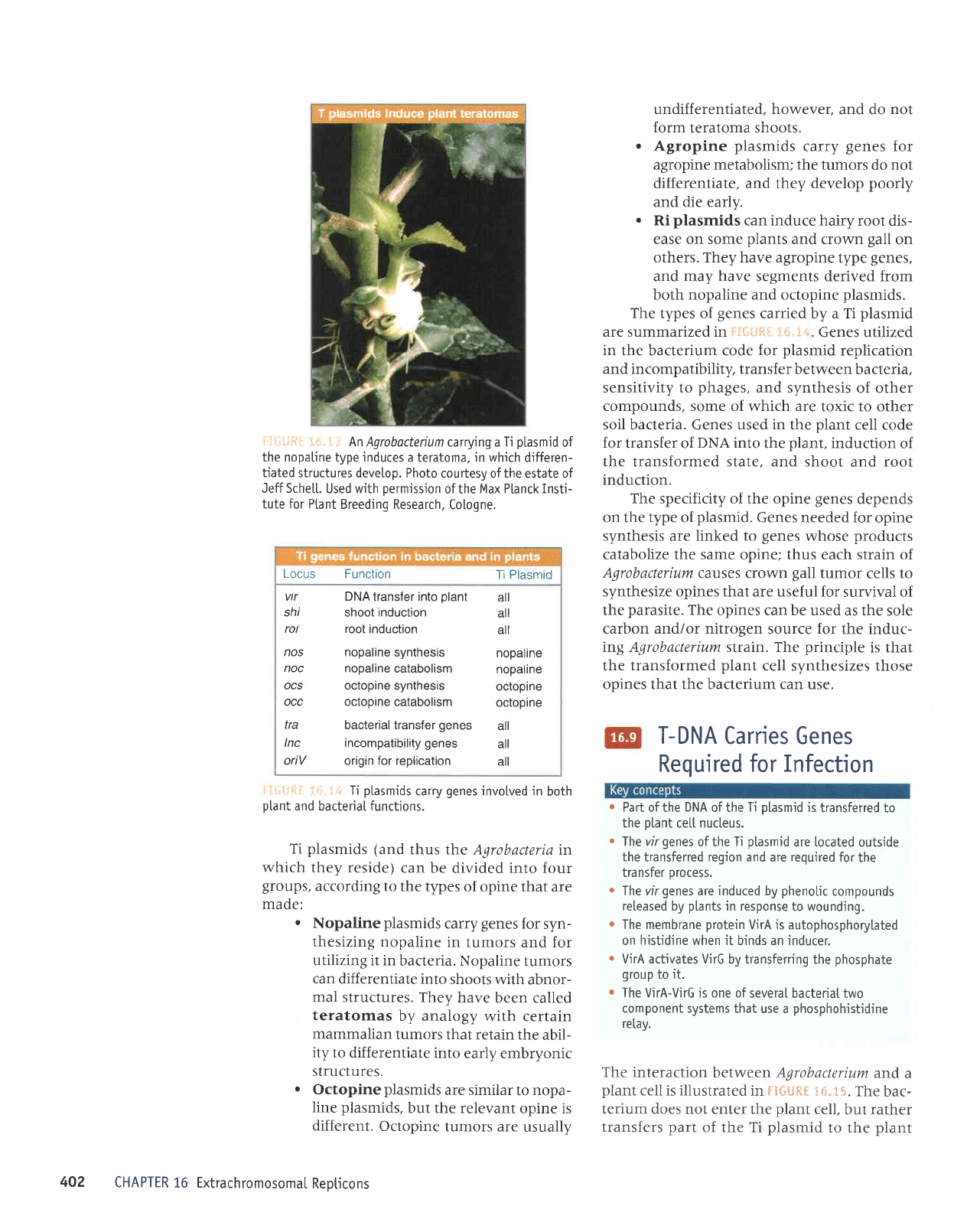
ir:;.;i;iiL
i r.1
.j An
Agrobacteium
carrying a
Ti
plasmid
of
the nopatine
type
induces
a teratoma,
jn
whjch
djfferen-
t'iated structures
devetop. Photo
courtesy of the estate of
Jeff Schett.
Used with
oermission of the
Max P[anck Insti-
tute for Ptant
Breeding Research,
Cologne.
i-ii:l-:{i
r i=-.:.i;
Ti
ptasmids
carry
genes
involved in
both
p[ant
and
bacterial
functions.
Ti
plasmids (and
thus tlire Agrobacteria
in
which
they reside)
can be
divided into four
groups,
according
to the types
of opine that are
made:
.
Nopaline
plasmids
carry
genes
for
syn-
thesizing nopaline
in
tumors and for
utilizing it in
bacteria.
Nopaline tumors
can
differentiate into
shoots
with abnor-
mal
structures. They
have
been called
teratomas
by analogy
with certain
mammalian
tumors
that retain the
abil-
ity
to differentiate
into
early embryonic
structures.
.
Octopine
plasmids
are similar
to
nopa-
line
plasmids,
but the relevant
opine is
different.
Octopine
tumors are
usually
CHAPTER
1.6 Extrachromosomal
Reoticons
undifferentiated, however,
and do
not
form
teratoma shoots.
.
Agropine
plasmids
carry
genes
for
agropine metabolism; the tumors
do not
differentiate, and they develop
poorly
and die early.
.
Ri
plasmids
can
induce
hairy root dis-
ease on some
plants
and crown
gall
on
others. They have agropine
type
genes,
and may
have
segments derived from
both nopaline and octopine
plasmids.
The
types of
genes
carried by a Ti
plasmid
are summarized in
fl'i*lifit t*.i'i.
Genes utilized
in
the bacterium code
for
plasmid
replication
and incompatibility, transfer
between bacteria,
sensitivity to
phages,
and synthesis
of other
compounds, some of which are
toxic to other
soil bacteria. Genes used
in
the
plant
cell code
for
transfer of
DNA into
the
plant,
induction
of
the transformed state, and shoot
and root
induction.
The specificity of the opine
genes
depends
on the type of
plasmid.
Genes needed for
opine
synthesis are linked to
genes
whose
products
catabolize the same opine; thus each strain of
Agrobacterium
causes crown
gall
tumor
cells to
synthesize opines that are useful for
survival of
the
parasite.
The
opines can be used
as the sole
carbon and/or nitrogen
source for the induc-
ing Agrobacterium strain The
principle
is that
the transformed
plant
cell synthesizes those
opines that the bacterium can use.
T-DNA
Carries Genes
Required
for Infection
.
Part
of the
DNA
of the
Ti
plasmid
is
transferred to
the olant ce[[ nucleus.
r
The vrr
genes
of the
Ti
ptasmid
are
located outside
the
transferred
region
and are
required
for
the
transfer
process.
o
The vir
genes
are induced by
phenotic
compounds
reteased
by
plants
in response
to
wounding.
o
The membrane
protein
VirA is autophosphorytated
on
histidine
when it binds an inducer.
r
VirA activates VirG
by transferring the
phosphate
group
to it.
r
The VirA-VirG is one of
several bacterial two
component systems that
use a
phosphohistidine
reray.
The interaction
between Agrobacterium
and
a
plant
cell is illustrated
in
E{#liSf;
i*"1h.
The
bac-
terium does not
enter the
plant
cell.
but rather
transfers
part
of the Ti
plasmid
to the
plant
Locus Function
Ti
Plasmid
vtr
snt
rot
nos
noc
ocs
occ
DNA
transfer into
plant
all
shoot
induction
all
root
induction
all
nopaline
synthesis
nopaline
nopaline
catabolism
nopaline
octopine
synthesis
octopine
octopine
catabolism
octopine
tra
bacterial transfer
genes
all
lnc incompatibility
genes
all
oriV
origin for replication
all
402
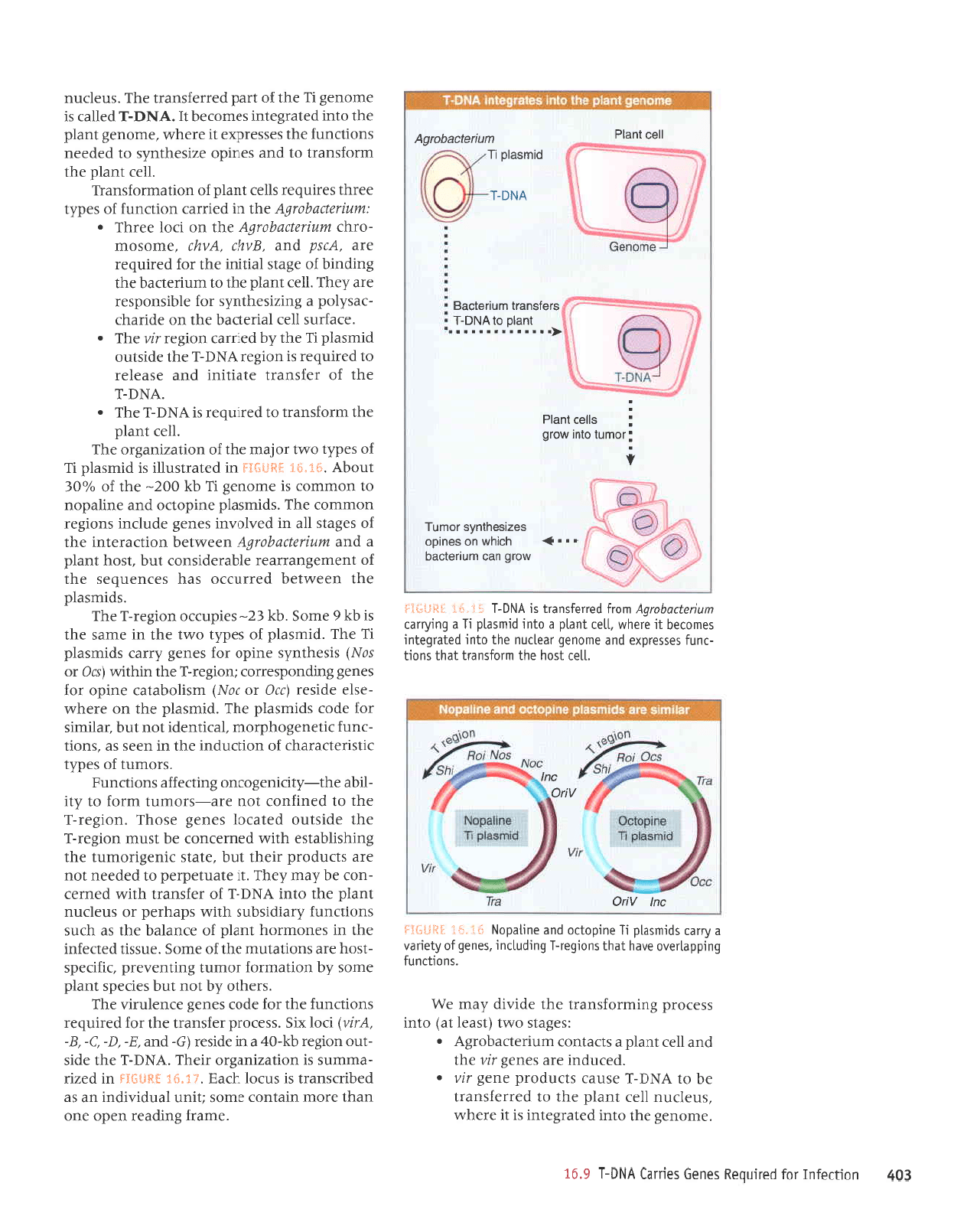
EO?
uorllaluJ
toJ
pelrnDau
sauag
saurel
vNo-I
6.9l
'JruouaS
aql olur
paleJ83lur
sl
1l
ereqM
'snJIJnu
IIJJ
tueld
Jqt o1
peJJeJSupJl
aq ol
YNO-I
esneJ
sl)npoJd J]uJB Jt^ .
'pJJnpur
Jre sauJS
Jt| Jtql
puP
IIaJ
lueld
e slf,eluoJ
unuJDeqorSv .
:sa8€ts
oAtl
(lseal
le)
olur
ssJJord
Sururo;sueJl
er{t Jpr^rp Leru a14
'su0rllunJ
6utddellano
a^eq
leql
suoLber-1 6uLpn1:uL
'saueE
1o
[1auen
e
fiuer
spruseld rg euLdolro
pue
auqedoll
t
i'+i.
31.4ilt^ii:iS
cul
AUo
Alro
cul
'll0l
]soq
oql ul.loJsuPll
lPql
su0rl
-run1
sassardxa pue
auouab
lpaltnu aql olur
palerbaluL
sourolaq
lr
o.laqm
ller
1ue1d
e olur
pLuseld
11 e 6ur&ler
wnuapoqotby
uor;
pollo1sup.rf
s!
VNq-l
:;1.'+i
:THil:*rij
alo:6 uec uJnuolceq
sezrseqlur{s .roun1
I
!
rounl
olur
ivrolb
!
sllec
lueld
luPlo
otvNo-l
sJelsuerl uJnuelcp8
VNO-I
pruselo
rf
wnlJapeqoJDv
llec
luEld
'auerJ
Surpear uado euo
ueql aJoru ureluor aruos
ilrun
Ienprnlpur
ue se
pJqrDsuerl
sr snJol
qJPg'd.i"$t
EHf';sfc
ur
pazrJ
-eurruns
sl uoltezrupSJo
JrJqJ'VN(-J Jql eprs
-tno
uorSar
qI-07
e ur eprsJr
(t-
pue
'E-'A-
5-'g-
'ytttl
rtolxr5
'ssarord
ralsueJl eql JoJ
parrnbar
suorlf,unJ
Jqt JoJ apor saua8 aJualnJIA aqJ
'sJeqlo
,{q
lou
1nq
saDads
lue1d
aruos z(q uoperuroJ
rorunl Surluarrard
'rgnads
-lsoq
JrP suorlelnru aql
Jo
eluos
'Jnssrt
pJlJJJur
eql
q
sJuoruroq
1ue1d;o
Jrueleq Jql sp
q)ns
suortJunJ
,{rerprsqns
ql1,r,l
sdeqrad ro snapnu
1ue1d
aqr otul
VN(-J
Jo
JeJsupJl
qtlM peureJ
-uoJ
Jq.{eru,{aq1
'11
atenladrad
o1
papaau
1ou
are
slrnpord Jraql
lnq
'alels
luaStJorunl
Jql
8urqs11qe1sa
qtlm pJurJJuoJ
Jq
lsnru
uofar-1
Jqt Jprstno
pJlpJol
saua8 asoql
'uor8ar-;
Jql 01
peulJuoJ
lou
Jle-sJorunl ruroJ o1 .r{.lr
-gqe
aqr-dtlJluaSoJuo
3urpage
suolpund
'srorunl
;o
sad.r{.1
JrlSrJel)PJBqJ
JO
uOrDnpUI aql UI UeeS Se
'SUOII
-JunJ
rrlJueSoqdroru'lpJrluJpr
lou lnq
?elrrurs
JoJ epoJ spnuseld
aql
'prurseld
aql
uo Jreqm
-asla
JprsJr
(ctg
to rory) ruslloqeler autdo :oy
saua8 Surpuodsauo;
1uo6ar-1
aqt
ulqtlm
(scg
to
solg)
srsaqluds
aurdo roy saua8
zkrer
spnuseld
IJ
eqJ
'pnuseld;o
sadr(1
omt Jq1 ur aues eq1
sI
q{
6
Jruos
'q>l
g7-
satdnrro uo€ar-1
aq1
'spnuseld
Jql ueamleq
perJn)Jo
seq
sJJuanbas aql
;o
luarua8uerJpeJ
JIqerapISuoJ
lnq'rsoq lueld
e
pue
Lunuapaqot6V
uJeMlaq uollJeJelul aql
;o
sa8els
ile
ur
penlolut
sauaE
epnlJul suor8ar
uoururoJ eqJ
'spruseld
aurdopo
pue
auqedou
01 uoururoJ
sr aruoua8
IJ
q>l
002-
Jq1
Jo
%0€
rnoqv
'typ6
4H#*f3
ur
palpJlsnl1
st
ptuseld
t1
;o
sadr(1 o,rzu roleru
eql
Jo
uouezue8ro_aq1
'llal
luPI0
eq1 uroJsuerl
o1
pa:rnbal
sl
VNCI-J
eI{J .
.VNCI-J
aql
Jo
JaJSueJl elelllul
puP
esPJIer
o1
parmbar
sr uor8ar
VN(-J
el{l eplslno
prruseld
1;
aqt
Iq
pelrreJ
uor8ar
rm Jrlf o
'eJeJrns
IIaJ IerJJDeq
aql uo JpIreI{J
-resdlod
e Surzrsaqlu.ds
ro; alqrsuodsar
are z(aq1
'1ar
lueld
Jq1 ot runlJatJpq
eql
Surpurq;o a3e1s
IeEruI
eql ro;
parmbar
arc
'ytsd
pue
'gAtp 'V^tp 'euJosour
-oJtqJ
wnuajcaqotfy
aql
uo IJo{ aeJel o
:wnuapaqot|y
Jq1 ur
peIJJe)
uollJunJ
;o
sad.{1
aarqt
sa;rnbal sllal
1ue1d
1o
uollpluroJsup4l,
'[a]
luPlo
eql
rrrJoJsueJl
ol
pue
saurdo
aztsaqlur(s
ot
pepJJu
suorl)unJ aqt sassardxJ
1I
eJequ'aruoua8
1ue1d
eql
otul
paler8alur saruorJq
1I'17Nq-I
pellpl
sr
aurouaE
rJ Jql
io
ped
pa;ra;supn aqJ
'snelJnu
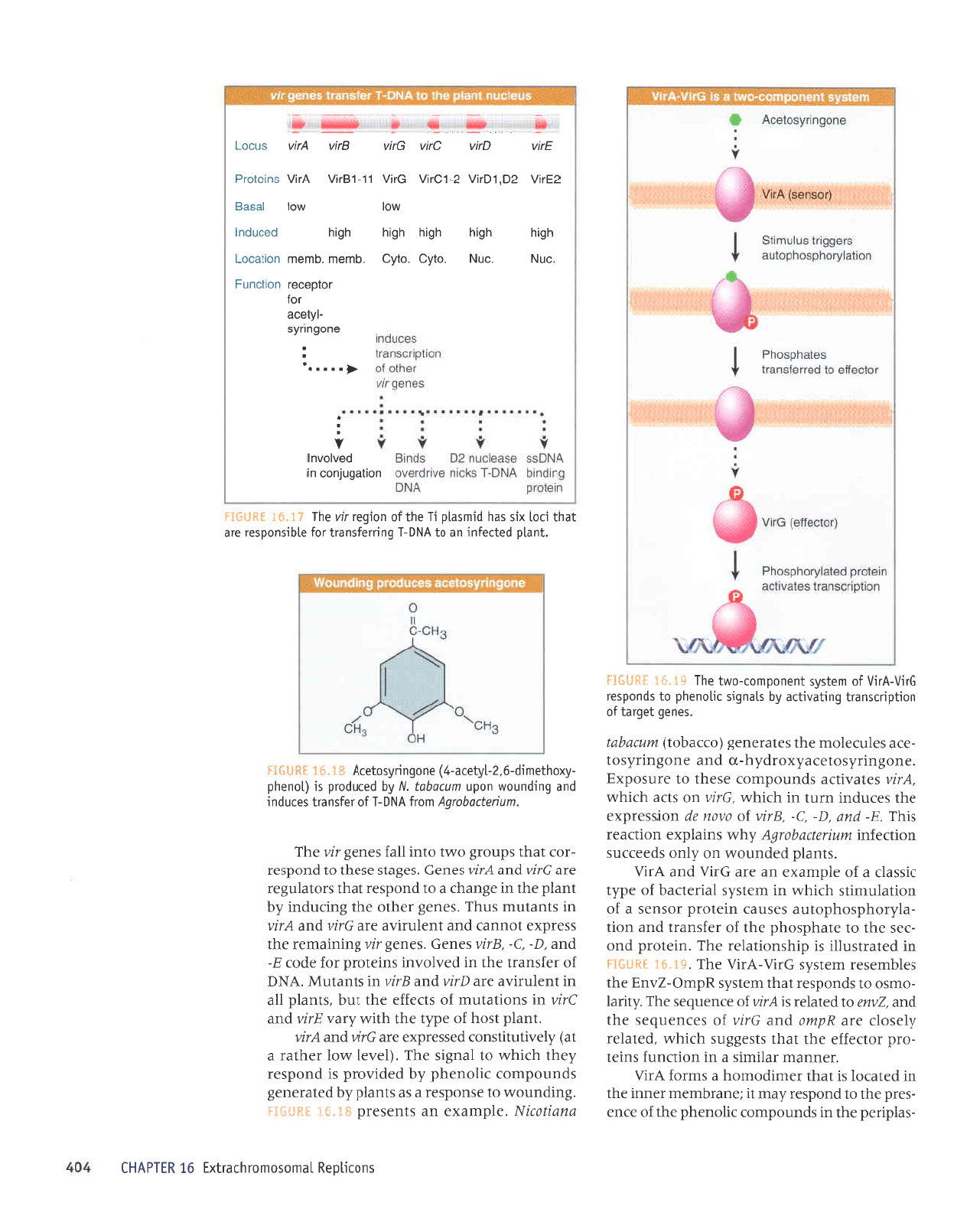
-splduJd
Jqt ur spunodruor
rqouaqd
aqt;o arua
-sard
aql o1
puodsar
r{.eru
t1
laueJqruaru
reuur Jql
ur
pele)ol
sr
leqt
JJrurpouoq
e sruJoJ
vrr^
'JJUUeUT
JPITTUTS e Ur UOTIJUnJ
Sulal
-ord
ropa;;a
Jqt
leqt
stsaSSns
q)lq,lr
'pJlpler
,{.1aso1r
arc
ydwo
pue
gJA;o
saruanbas aql
pue'Z^ua
ol
patelJr
srVn^lo aruanbas
JqI'^tFel
-oruso
ot spuodsar
teqt
uats.{s
gdur6-7nug
aqr
sJlquesJr ruats^s
CrlA-VrlA
aqJ
'6I'$i
lEfi$il
uI
pJleJlsnll
sr drqsuorlPlJJ
JqJ
'ura10rd
puo
-Jes
aql o1 ateqdsoqd
aqt
1o
raJsuprl
pue
uoll
-e1.{roqdsoqdotnB
sasner uratord
Josues
p
Jo
uollelnrults
qJIqM
ur
rualsls
IprJeDpq;o
adLl
f,rssell e
;o
aldruexa
ue are
grr1
pue
VJrA
'stueld
pJpunoM
uo lpo spJeJrns
uoll)aJul
tunualtaqotqy z(qa,r
sureldxJ uorlreJr
slqJ
'A-
puo
'e- ')- 'gtln
lo
0^0u ap
uorssardxa
Jql saJnpul
uJnl ur
qJIqM
'tJt^
uo sDe
q)rq^l
'VJtl
slletrlre
spunodruof,
asJql ol JJnsodxg
'auoBurr,{.solarez{.xorpdq-n
pue
auoBurrLsol
-aJp
sJlnJelou eqt sJteJeuaS
(orteqot)
wnnqal
'seueb
1eble1
1o
uorldursuerl 6urlenLlre [q
sleubrs rLloueqd
o1 spuodsar
gll1-Vrl1
;o
LualsAs
luauoduor-or'rl
aq1
*t'*1 **ll$IJ
suosr.loau
leuosoruolqlPllxl
9l
ulldvHl
auo1ntN'aldruexa
ue stuasa-rd
st'$i *Hgl*Hj
'Supuno,rn
ot asuodsar
e se s1ue1d Lq
paleraua8
spunodruor llouaqd
dq
paprnord
sr
puodsar
,{aqt qrrqzu
o1
leu8rs
aq1
'(1a,ra1
Mol raqler
p
1e)
,{1anr1n1psuor
passa,rdxe
ere
gJApueVJ!
'lueld
lsoq;o
ad.{1 eql
qllM [rct
gntpue
UtA
ur suorlelnru
Jo
sTJJJJJ
aql
tnq
'stueld
1e
ur
luJInJrAP
aJe
Qlrlpue
glrl
ur sluelnw
'YNo
Jo
JeJsupJl Jql ur
penlo,,r.ur
suratord
JoJ epoJ
a-
pue'O-
'J-'gt!^
seuJ9
'seue8
Jn Suruteruar aql
ssardxa
louuPJ
pu€
lualnJr^e
eJe
DJmpue vJA
ur sluplnru snql
'saua8
Jeqlo aql Suonpur
r{q
tueld
aqt ur a8ueqr e ot
puodsar
1eql
sJolplnSeJ
eJe
gfi^pue
VJm
SJUJC
'sa8els
eseql 01
puodsar
-roJ
teql
sdnor8 omt otur
1e1
saua8 fi^ eq;-
'wnualtoqot0y
uolJ
VN6-t
Jo
laJsuerl so)npur
pue
6urpunon uodn wntoqol'ry fq
parnpord
st
(louaqd
-Axoqleurp-9'71&are-l)
auo6uuAsolary
E!'St :HfiSIJ
'1ue1d
papalur
ue 01
VN6-I
buulelsuell ro1 alqLsuodsar
eie
leql
Dol xrs
seq
pruseld
lI
oql
Jo
uorbor.n,r eql
iI'g{
}HfiSIj
uorleOnluoc ur
po^lo^ul
A
cnN cnN oy{3
'op{3
qbtq
q6tq q6tq
Lt6tq
MOI
euobuuls
-1[1ece
JOJ
roloocor
uoucunl
'qurau'qtlour
uorleco-l
LlblLl
pacnpul
/v\ol
lesE8
zll^ zo'torln z-lul/\
9rln
tl-tfln
vrn
surolord
1!:
.9'':
"":
0r!^ s!^
.
vr:
sncor
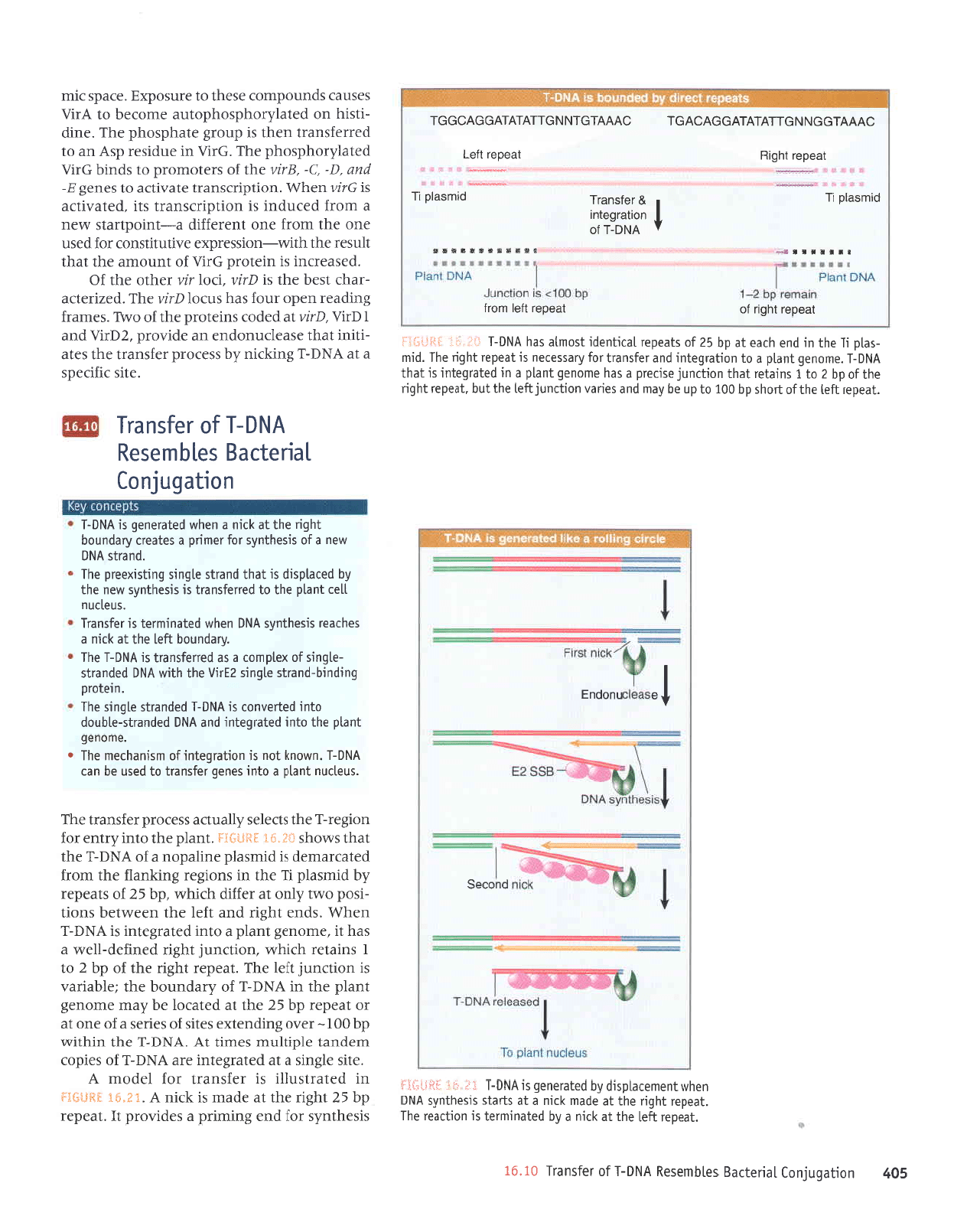
90,
uoqPbnfuol
leua]leg
salquasau
vN0-1
Jo
rajsuerl
0l'gl
'lPadal
Ual
aql
lp
llru
e ^q
palputulal
sr uotlleat aq-[
'leadol
lqbu
aql
le
eppu.l
llru
e
lp
slels srsaqlu^s
VNo
uoqM
luotuoleldsLp
[q paleraueb
sr
ypq-1
,i;i
'ij
i
:ii]il'ir:]i.j
'leader
1a1
aqljo
iloqs
dq
OOf
ot dn eq r\eu
pup
saue^ uorlrun[1a1
aq1
1nq
'leadat
lqbu
aql
J0
dq
Z
ol
I
surelol
1eq1
uoqrunI
esrrald
e seq euoua6
1ue1d
e ur
pelerbelur
sr
1eq1
y16-1
'auouaE
1ue1d
e o1 uorlerbalur pup
le;suptl
ro1 &essarau sL
leadar lqbu
eq1
'pru
-seld
rl aql ur
pua
qlpa
le
dq
EZ
Jo
sleadar
lerquepr
lsoule
spq
VN0-1
i:r:.ri.i -i?jil,:]i;i
srsaqluz(s JoJ
pue
Sunurrd e sapnord
U
'leadar
dq
SZ
lqSlr
aqt
te
rpplu
sI >lrlu
v
'{"#-$E
}sft-5i
ur
pJleJlsnllr
sr TJJSUPJ1 JoJ
Iepou
v
'a1rs
a13urs e
le
paler8alur
JJe
yN(-1
;o
sardo;
rurpuel a1dr11nur seup
lV
'VN61-J
eq1 ulqtrM
dq
OOt-
rarro SupuatxJ
sJlrs
Jo
serJJS e
Jo
auo
le
ro
leJdeJ
dq
E7
aqt
tp
peleJol
aq
t(eru
eurouJ8
1ue1d
aqr ul
yNO-J
yo
.,{.repunoq rql
lrlqeuel
sr uorlrunl
Ual
eqJ
'teadar
lq8lr
aqr
yo
dq
7
o1
I
sureler
qJIqM
'uortrunl
lq31r
pauqap-lleM
e
spq
tr
'aruoua8
1ue1d
e olur
pale;8e1ur
sr
yNO-I
ueq6
'spua
1q3rr
pup
Ual
Jql
uJJMlaq
suorl
-rsod
o.r,rl
.dpo
1e
reJJrp
qrrqm
'dqSZ
yo
sleadar
,{q
pnuseld
rJ arll ul suor8ar Suqueg eqt ruoJJ
pet€)rpruap
sr
pnuseld
auqedou
p
Jo
yN(-J
aql
1er{l
smoqs
*fr'$}T 3*fiiJ5j
'1ue1d
aqt otur,{rlua
roJ
uor8ar-1 eql sDelJS .,{[entre ssarord raysupJl eqJ
'snollnu
1ue1d
e olur saue6
ra;suer1 ol
pasn
aq upr
VN0-l'uMoul
1ou
sr uoqerbalurlo
ursrueqlau
a{l
o
'0u0uaD
1ue1d
aq1 olur
paler6alul pup
VN6
pepueqs-alqnop
olur
pailo^uol
sl
VN0-l
papuprls
a16uts eq1
'u
relord
6urpurq-puetls
a16urs
73111
oql
qll/\
VN6
papuet$
-e16urs
lo
xalduor
p
sp
palralsuerl
sl
VNg-l_
aql
'rtepunoq
Ual
aql
lP
llru
e
soqlpar srsaqlur{s
VN0
uaqM
palputulal
st raJsupll
'snatlnu
1er
1ue1d
aql ol
palraJsuerl
st
stsaqlur\s Meu eql
r{q
pareldsrp
sr
lpql
puel}s
a16urs Euqsrxeard aq1
'pue4s
vNo
Mau
e
Jo
srsaqlur\s
.ro; leuud e salearl &epunoq
fq6!
oql
lp
pru
p
uaqM
palplaua6
st
Vt'lO-t
uoqPbn[uo]
leualle8
solquasau
vNo-I
Jo
raJsuPrl
'a1rs
rqnads
e
tp
vN(-I
8ur1ru,{q ssarord
reJsuprl Jq1 salp
-l1FI
tpql
espJpnuopua
ue apt.tord'ZCJIA
pue
IqrIL'erl^
le
pepoJ
sulatord
Jq1
Jo
o^,\[
'sJruerJ
Surpear
uado rnol spq snJol
C'J!^
eLlI
'pezlrapp
-Jeq)
lsJq
er4t
sr
Q)t^
'uol
JtA JJqlo eql
Jo
'pasper)ur
sr uralord
DrlA
Jo
tunoure
aqt
leql
llnsJJ
eql
qll,u-uorssardxJ
elltnlllsuor JoJ
pJsn
Juo
Jql ruoJJ euo
luJrJJJrp
e-lurodlrels rvrau
e ruoJ;
pernpur
sr uorldr.rrsupJl sll
'palplllJp
sr
gJt^
uJqM
'uolldl.rrsuert
alelrpp o1 saua8
E'-
puo'O-
')-'gt!^
erp
Jo
srJtotuord
ot spulq
DrIA
palelLroqdsoqd
aq1
'DrlA
ul anplser
dsy ue
ol
peJJaJsuerl
ueql sI dnor8 ateqdsoqd
aq1
'aurp
-pslq
uo
patelz{.roqdsoqdolne euoJJq 01
vrIA
sJsneJ spunodruor
JsJql ol arnsodxg'areds lrru
leeder lqbu
1o leedar
gal
Luorl
tartxr5F
afltr*fi*&*sBte
A
VNC:I- lo
I
uorleroolul
prr.useld[
".*
|
Slelsuel]
pruseldrl
ieeder lqOrg
teader l+al
CVVVIOENNEITV]VIVOEVCVEl-
CVW1OINN9IIV]VIVOEVCES-
puocas
I
"
nuopur
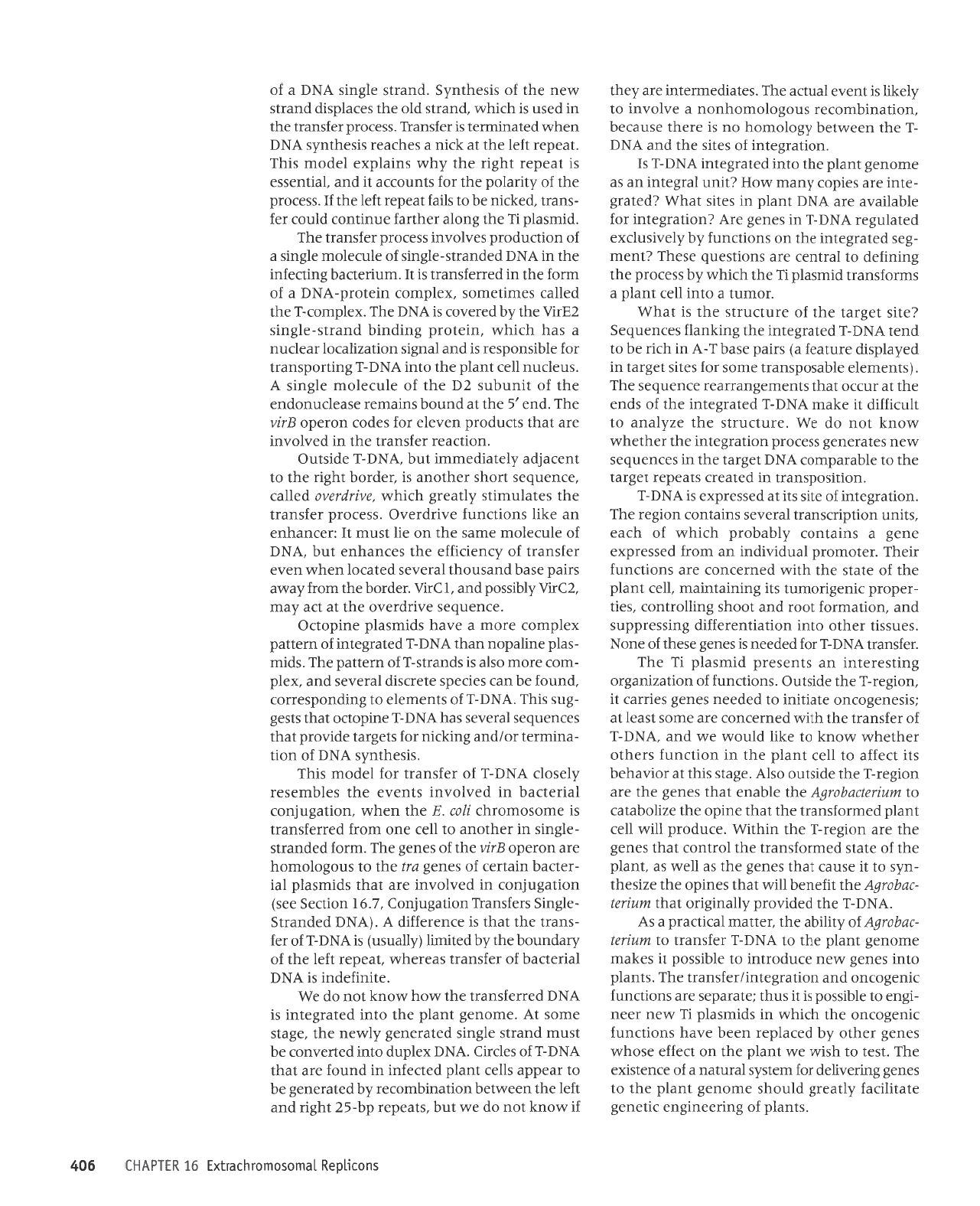
'stuPld
Jo
SuuaJurSue Jrleue8
rletrlrreJ .dlrear8
plnoqs
aruoua8
rueld
aqt ol
saua8 Surranrlep JoJ rualsLs
IpJnteu
p
Jo
JJualsrxJ
JqJ
'tsJl
ot
qsr&r
J,lr
tueld
aql uo
DeJJa
asoqM
sauaS raqlo
z(q
pareldar
ueeq JABq
suorl)un;
rruaSoruo eql
qlrqM
ur
spuuseld
rJ ,trJU
reeu
-r8ua
ol alqrssod sr
lr
snql
lalerBdas
erp suorlf,unJ
rruaSoruo
pue
uorter8alur/JJJSuert aq1's1ue1d
olur saua8
Mau
e)nporlur
ol Jlqrssod
lr
sa>leru
aruoua8
1ue1d
aqt 01
VN(-I
JeJsuert ot wruJal
-taqot6y
yo,{111qe
eql
'retlpru
IetrDerd
e sV
'VNq-J
aql
papuord
Llleur8rro
tertrt
wnuaj
-taqot6y
atTt
tlJruaq
IIIM
leql
saurdo rqt azsaql
-uLs
ot
tr
Jsnet
teql
saua8 Jqt se
IIJM
se
'tue1d
eql
Jo
Jlels
paruJoJsuert
Jqt
IoJluoJ
leql
saua8
aqt
rrp uor8ar-1
eql uqtlAA
'arnpord
IIrM IIJ)
1ue1d
paruroJsueJt
Jql
teqt
aurdo eql JZIIoqeteJ
ot wruJapaqotCV
aqt alqeue
teql
sauaS Jr{t Jrp
uodar-1 Jql aplstno oslv'a8ets
slql
le
Jor^eqJq
sll
lleJle
01
IIe)
1ue1d
aqt ur uorlJunJ sraqlo
reqlJI{M Mou>l ol
a>lII
plnoM
J^t
pue
'YNC-J
Jo
raJSuPJl
eql rllr^1.
pJurJJuoJ
elp auros
lspel le
isrsauaSoruo
alentul
ol
papeeu
saua8 sarrrer
lr
'uor8ar-1
aqt
eprstnO
'suorpunJ
Jo
uortBzrue8ro
Surtsaratur ue sluasard
pruseld
II
aqJ
'relsupJr
VN(-J
JoJ
pepaJu
sr saua8 esJql
Jo
auoN
'sJnsslt
Jal{to
otul uorlprtuoJe};rp
Surssarddns
pue
'uorleuJoJ
toor
pue
looqs
Suqlorluor
'saq
-radord
rruaStrorunl
slr Sururelureru
'11a1
tueld
aqr
Jo
Jlpls eql
qllM
pJura)uoJ
eJe suorlJunJ
rraqJ
'Jatoruord
lenprnrpur
ue uoJJ
passardxa
aua8 e surpluoJ .{1qeqo:d qJIqM
Jo
qter
'slrun
uorlduJsupJl
IpJeAes
sureluoJ uor8ar
aq1
'uorler8alur;o
elrs str
1e
passardxa
sl
VNq-I
'uorlrsodsuBJl
ur
paleJrJ
sleadar
la8rel
eqt ol elqpredruor
y51q
1a3re1
aqt ur
saluanbas
,t,rJU
sJlpJeua8 ssarord uorler3alur
Jql rJqlaqm
,!.ou>l
lou
op
aM
'JJnlJnrls
aql
azr(1eue o1
tlnJrl;rp tl
r>leru
VNO-J
paler8arur
Jt{l
}o
spue
Jql
le
Jn))o
lpql
slueueSuerrea.r
aruanbas aq1
'(sluaruala
alqesodsuerl
Jruos roJ satrs
ta8rel
ur
paLeldstp
arnlpeJ e) srred
aspqI-y ur
qrrr
rq ol
pual
VN(-J
paler8alur
aqt Sunlueg saruanba5
Zalrs
la8rel
er{t
Jo
JJnlJnJts Jql
sl
lEqM
rorunl
e otur
1Jl
rueld
e
sruJoJsupJl
pnuseld
IJ
eqt r{Jrqm Lq
ssatord aqt
Suruqap ot
IeJtuJ)
aJe suortsJnb
asaql
ZluJru
-8as
pater8alur
aql
uo suorlf,un;,{.q,{la,rrsnpxa
paleln8ar yNq1-J
ur saua8
ary
luor1e;8elur
loJ
alqplre^e arp
VN(
1ue1d
ur sJlrs
teq6
2parer8
-Jlur
Jre sardot dueru
,t-og
clrun
IeJBJlur
up
sp
aruoua8
lueld
aqt otul
patet8atur
VN(-J
sI
'uorter8atur
Io
sJtrs Jqt
pue
VNq
-J
aql uJeMlaq r{3o1oruoq
ou sr araql
esnef,eq
'uorleurqruorar
snoSolouoquou
e JAIoAur
01
d1a41
sr
lue^a
IenlJE
aqI
'sJlerpJrrrJatur
are daql
suolrt0au
lPurosoruorqlulxl
9I
ulldvHl
Jr
Mou>I
tou
op a,r.r
tnq'sleadar
dq-97
rqStr
pue
qal
eql uJeMleq uoppulquorar
[q
paleraua8
aq
o1 readde s11ar
tueld
papaJur
ut
punoJ
ere
lpql
VN(-JJo
sepr)
'ygqxaldnp
olulpaueluor aq
tsnu
pueJts
a13urs
paleraua8
Lla,rau aq1
'a8els
Jruos
lV
'aruoua8
1ue1d
aqr olur
pater8atur
sr
vNC
paJJeISueJt
aql
.&toq Mou>l
lou
op JM
'rlrurJJpur
sl
vN(I
IprrJneq Jo
relsuerl seJraqM
'lBadar
1JJI
aqt
Io
tuepunoq aqr.{q
palluq
([1ensn)
sr
yN(-J
Io
JeI
-sueJt
Jql
tpqt
sI
rJurrJJJIp
V'(VNO
papuerls
-apur5
sreJsue.{l uoue8nfuo)
'4'91
uorpag aas)
uorle8nluor ur
panlonur
ere
tpq]
spnuseld
1er
-rJppq
ureuJf,
;o
saua8 ou er;1. ol snoSoloruoq
are uorado
gil^
eqt
lo
sauaS
aq1
'ruJoJ
papupJts
-a13urs
ur Jaqtoue ot
IIaJ
auo uoJJ
paJJaJsupr
sr aruosourotrtrJ tln'a' aql
uJqM
'uorle3nluor
IPrrJlJPq
ur
pJ^lo^ur
slua^e aql salqruJser
Ilasolr
VNO-J
Io
rJJsuert ro;
Iaporu
sIqI
'srsaqtu^s
YN(
Jo
uoll
-eurrurJt
Jo/pue Eurpru ro; sla8ret apnord
leql
saruanbas
IeJaAes
seq
VN(-J
aurdotro
leql
slsa8
-3ns
srql
'vN11-J
Jo
sluJruala o1 Surpuodsarror
'punoJ
Jq up) sar;ads Jlerlsrp
IeJaAas
pue
'xa1d
-ruoJ
eJoru osle $ spuprs-1;o urarted
JqJ'spru
-se1d
auqedou upqt
VNq-J
paler8alur;o
uraled
xaldruor eJoru
p
elpq spluspld aurdop6
'aruanbas
JArJpJJno aql
le De
deru
'731n
z(lqrssod
pue
'1
3rrn
'raproq
aqt ruorl z(eme
srred aseq
pupsnoql
IpJaAes
paleJol
uaqm
ueAJ
relsuerl
1o
Lruanry;a eql se)uequJ
rnq
'VNq
Jo
JlnJalou alups Jql uo erl
lsnlu 1I
:JeJuPqua
up J>lrl suorl)unJ eArJpJaAO
'ssarord
JeJSupJl
eql sJlPlnlults ,{1tear3
qJIqM
'aMJpJa^0
palleJ
'aruanbas
uoqs
JJqloup sr
lapJoq
lqErr
aql o1
luarelpe
Llaleperurul
lnq'VNq1-J
aprstno
'uorlJpal
JJJSUPJ1 eql ur
pe^Io^ur
JJp
lpr{l
spnpord uenelJ JoJ sapoJ uondo
gttt
aql'pua
/5
eql
lP
punoq
surPureJ JsPelJnuopua
er{t
Jo
tlunqns
Z(
eqt
Jo
JlnJalou a13urs
y
'snalJnu
1ar
tueld
Jqt
otul
VNO-J
Surtrodsuerl
roy alqrsuodser
sr
pup
leu8rs
uorlezrleJol reJIJnu
p
spq
q)rq,lr
'uratord
Surpurq
puerts-a18urs
ZErrA
Jqt.dq
paranor
sl
vNq
aql'xaldruo)-J eql
pJIIpr
seurlaruos
'xaldruor
uralo.rd-yN(
p
Jo
uJoJ aq1 ur
peJJJJsueJt
sl
lI'lunlJJlreq
Suura;ur
Jqt ur
VN(
papuerts-alSurs
Jo
aln)Jloru a18urs e
Jo
uorpnpoJd
sanlonur
ssarord,raysuprl JqI
'pnuseld
11
aqr 3uo1e requeJ enurtuoJ
plno)
JeJ
-supJl
'pJ>llru
Jq 01
qre;
leadar
Uel
er{l
JI'ssaro:d
aql;o
,huelod
aqt roy sluno))p
1l
pup
'lprluessa
sr
leadar lqSrr
aqt Lqan sureldxJ
lJporu
srqJ
'leadar
UJI
Jqt
tp
>lJru e seqJeJJ srsaqtu^ds
y1trq
uaqu
paleururJal
sr rJJsue-11
'ssaro;d
rJlsupll
aql
ur
pasn
sr
qJrqM
'pupJts
plo
Jqt sareydsrp
puerts
,lrJU Jql;o srsaqtuLg
'puerts
a18urs
y1qq
e;o
90r?
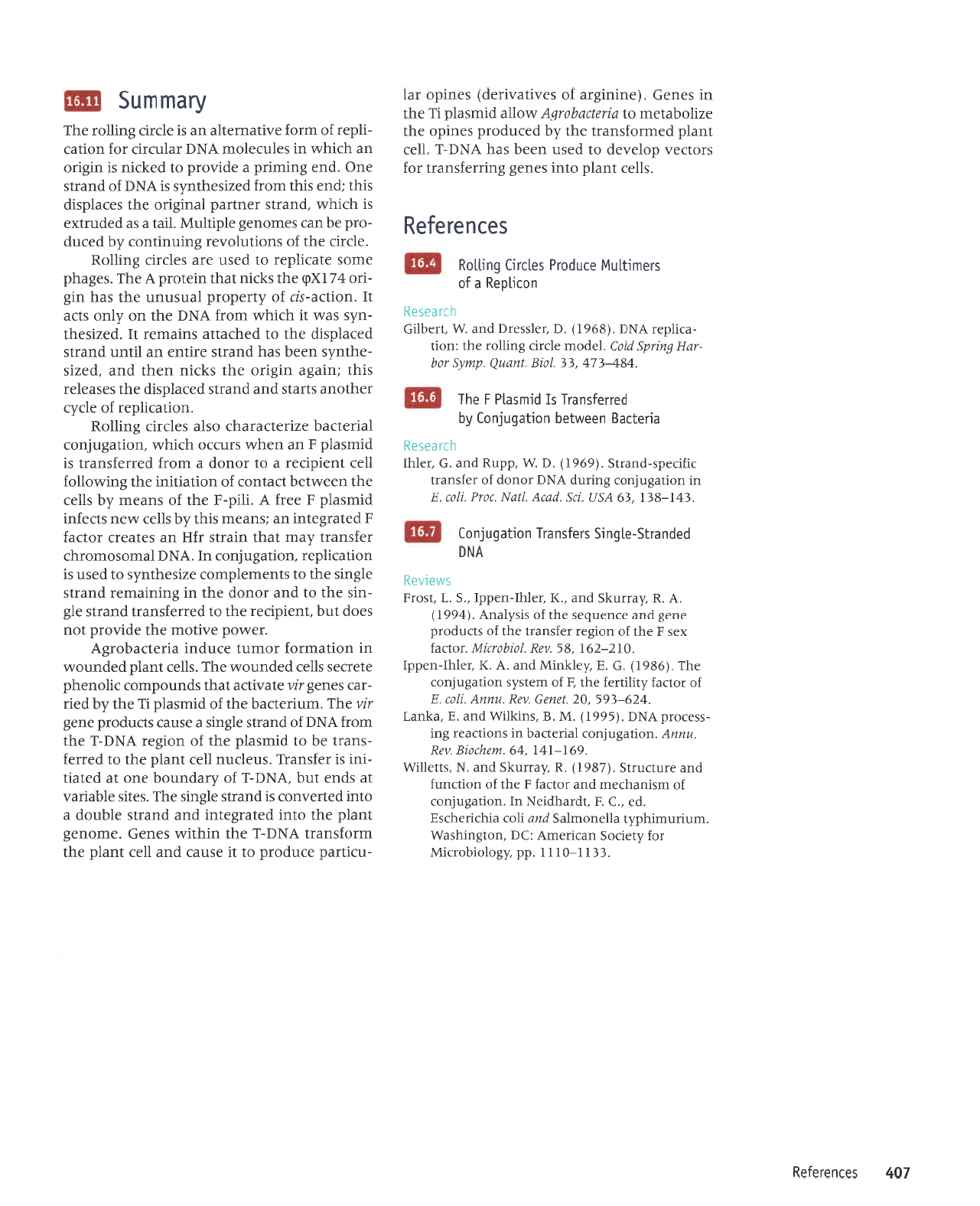
LO'
salualaJeu
'€€
I I-0I I I'dd
^Solorqorrrw
JoJ ^lar)os
upJrreruv :f,(
'uot8urqspM
'rnnlrnrulqdLl
elleuotulps
pu9
\o)
erq)rreqJsA
'pe
'') 'd 'lpreqplaN
uJ
'uolle8nluor
Jo
rusruPqJeru
pup
Jol)eJ
d
rql
Jo
uortrunJ
pup
ernt)nrts
'(zsot)
g
,{.errn1g
pup'N'stlelllM
'69I-ltI
'V9 'Lua4)otg
^aY
'nuuy'uoge8nluor
lerralreq
ur suorloear 8ur
-ssarord
VNA
'(E66I
)
'14I
'g 'su1>1ll1,1
pup
'E 'p>lupl
'vz9-E6S'OZ',pua,
^aY nuuv't|n
E
Jo
rol)pJ
,{111rray
aql
g
Jo
rualsz(s uorteSn[uor
aql
(986I)
'9 'g
,{aqurry pup
'V';
ta1q1-uadd1
'
oIz-z9l'88'^aA'l1ry)nw'rotrel
xas
d
eqt
1o
uor8ar
raJsuert aqt
;o
strnpord
aua8
pue
aruanbas
aqt
;o
srs,{1euy
'&66|)
'y'g
z(errn>15
pup
''>I
ta1q1-uadd1
''S 'T 'tsord
sMarAau
VNO
papuells-al6urS
sraJsupll
uorlpbn[uo]
.E1t_8f.1
,{.9
VSn
.pS .pmv
lleN.)01d.!l@.9
ur uorlB8nluor
Surrnp
VNC
rouop
Jo
reJsuerl
rt;trads-puerls
'(696I
)
'q
14
'ddng
pue
'D ,rrlql
q
lr easab
PueJleg
uaamlaq uoqebn[uo] Aq
pallalsuell
sI
puxsPld
I
aql
'Vgr-ELt'€t
lols
gonl'du.r[g
nq
-tog
|uttdg
plD'Iepout
alrro
Sur1lor eqt
:uorl
-erlydar
VNA
'(896I) 'C
talsserq
pup
.14
'traqlrg
q
lr Pasab
u0lrloau P
j0
srau.lr.Inh\| elnpold
salllrl 6urllou
salueraJau
'slleJ
lupld
olur sJuaS Surrra;suer1 ro;
srotral
dolanap 01
pesn
ueeq spq
VNO-J
'lla)
tueld
pJuroJsuert
eqt z(q
parnpord
sautdo
aql
ezrloqetJru
olauapaqotfy ,trollp
pruseld
11 aql
uI seueg
'(aurul3re
Jo
se^rle^rJJp) saurdo
re1
-nJrlrpd
arnpord 01
1r
asneJ
pue
IIJI
lueld
aql
ruroJsueJl
yN(I-J
Jql uqll^\ sauat
'eruoueS
lueld
aql olur
paler8atur pue puPrts
elqnop
p
olur
pJuenuoJ
sr
puPJls
aFurs eqJ
'salrs
alqerJe^
te
spuJ
]nq
'yNO-J
Jo
^repunoq Juo
te
pJlpll
-rur
sr JaJSue{
'snelJnu
IIJJ
lueld
Jql 01
paJJaJ
-suprl
Jq o1
pnuseld
eqt
Jo
uor8ar
VN(-J
ei{l
ruoJJ
vN(
Jo
puerts
a13urs e asneJ spnpord aua8
Jt^ )tq;-
'runrJalJeq
eqt
Jo
pruseld
t1 aqr ,{q
parr
-re)
sJuJB lrn alpnrlJe
leql
spunodruor rqouaqd
ataJf,JS slla)
pepunoM
eql's11ar
rueyd
papunom
ur uorleruJoJ
rorunl aJnpur errapeqor8y
'raaaod
alrloru
aql apnord
]ou
seop
lnq'luardrJJr
aql 01
peJJeJsuen
puerls
a13
-urs
Jqt 01
pue
Jouop Jql ul
Eututerua.r
puens
a18urs aql ol
stuarualduror azrsaqtuz(s ol
pasn
sI
uoqerlldar'uorte8n
luor uI'yN11
lpruosoluoJqJ
JJJSUPJ1, eru
1eq1
UIPJ1S JJH
uP SJlPJrf, JOIf,PJ
g
pale:3a1ur
up
lsuparu sqr,{q sila)
,trreu
speJul
prruseld
d
arrJ
V
'llld-d
aqt
Jo
suearu
z(q
s11ar
aq1 ueeMlaq
DpluoJ
Jo
uoIlEIUq aqt Sul,llolloJ
1ar
luardoar
e ol
Jouop
p
ruoJJ
peJJaJsupJl
sr
prurseld
{
up uar{,lr sJnJlo
qJIqM
'uolle8nfuoJ
IerJallpq
JZrJJlJeJeqJ osle salf,rl)
3u11og
'uorleJrlctsr
Jo
eIJAJ
Jeqloue supls
pue pueJls
pareldstp
aql saspalaJ
slqt
jurp8e
urSuo eqt s>l)ru
uJql
pue
'pezrs
-aqluz(s
uaaq spq
pueJls
eJllua up
iltun
pupJls
pareldsrp
eql 01
pJq)eup
surerual
1I
'pezrsJql
-uu(s
sea,r
U
qrrqM
UIoJJ
VN(
aqt
uo dpo
spe
tI
'uorlJe-sl,
;o
Lpadord
Iensnun
aql seq ur8
-rro
741ydr
rq1 s>lJru
leqt
ulatord
y
aq1
'sa8eqd
aruos aterqdal
01
pesn
eJe salJrIJ
SuIIog
'elJro
aqt
Jo
suollnlo^eJ Sulnultuor
,{.q
parnp
-ord
aque; seruoua8
a1dt11nyq'[et
p
se
papruxa
sr
qJrqm
'pueJls
raulred
pur8rro
aql saJeldsp
srql
jpue
s1{t
urorJ
pansaqtu,{s
sl
VNq1
Jo
pupJts
auo
'puJ
Sunurrd e apu.ord
01
pa>lJlu
sI uISIJo
ue
q)rqM
ur
sJlnJelour
YNC
JelnJrIJ
JoJ uollP)
-qda.r
yo
rxroJ alrleuJalle
ue sI JpJIJ 3u11or aq1
rteuuns
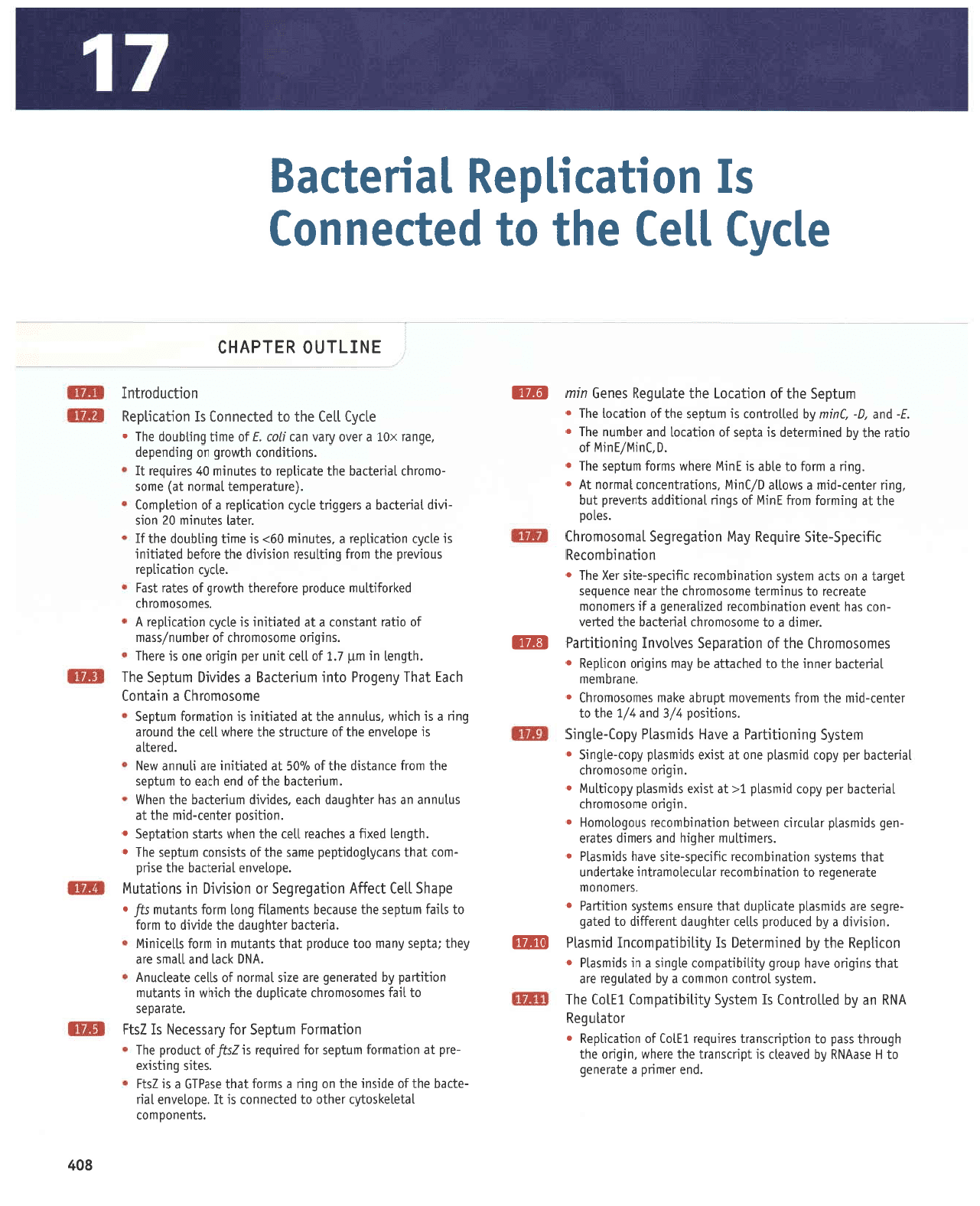
'pue
reulud P elPlaua6
ol
H
aspVNU [q
penealr
sr
ldursuerl
aql a.laqm
'ut6uo
aql
qEnorql
ssed o1 uoLldulsuetl
serLnbal
lllol
Jo
uoqerqdaS
.
roleln6au
VNU
ue Aq
pa11or1uo3
sI uals^S Alqrqqeduo3
Illol
aql
'ua1sfis
lorluo]
uourruor e
Aq
paleln6ar
ere
1eq1
suLbuo aneq dnor6 Alrlrqrleduor
a16urs e ur sprursell
o
uolrldeu eqt fq
paurulrala6
sI
rtlqrqqeduorul puuspld
'uorsr^rp
e fq
pernpord
s11ar talqbnep
lua.la#rp
o1
paleb
-el6as
ere spLuseld alerrldnp
lpql
a.lnsua sualsAs uorlrlpl
o
'slau0u0ul
alerauabar
ol uorleurq uoler lelnlalourerlu r
aleilapun
1eq1
sualsr\s
uorlpurquolal rgnads-e1Ls e^eq sprurspld
.
'sraurllnur
raq0rq
pue
staurp solpla
-uab
spruseld rplnl.lo
uaoMleq uorleurquotai
sno6oloruo;1
.
'utDuo
ourosotlt0rql
lpualrpq
rad r\dor
pLtuseld
l< le lsrxo
spLuseld Adorrllnyl
r
'urDu0
au0s0ur0rul
leuallpq
rad r\doc
pruseld
euo
le lsrxa
sprurseld
fdor-a16u15
.
uials^S 6uruorlqre6
p
a^eH sprLUseld Ado3-a16u15
'suorlLsodr
/€.
pue
r/l
a\t ot
lolual-pttll
oql uo.U sluaueAoul
l0nlqP
0)eu sauloSoilo.ll.{l
o
'0uPrqul0ul
lpualreq
leuur
aql ol
paqlpllp
aq
Aeur
suLbuo uorqdaS
r
saurosorxolql
aql
Jo
uoqelpda5 sanlonul
6uruor1r1e6
'jaurp
e 01
auosoulolql
lpuallpq
aql
pale^
-uol
seq
luana
uorJeurquolar
pazrle.lauaE
e
1r
slauouour
alParla.r ol snuru.lal
auosoulolql eql lpeu
oluanbes
labiel
p
uo slre ualsAs
uorleurquolat rgLrads-a1rs lex oql
.
uorlPurqur0rau
lgDads-alrs arrnbau fie6
uoqebarba5
leuosoruorq3
'seloo
aql
lp
Eurur.lo; urol1
lur1a1
Jo
s6uu
leuorlrppp
sluanard
1nq
'6uu
reluar-pru e smollp
6/3ur61
'suoqe.llueluol
leuJtou
]!
o
'6uu
e urol ol alqp sr
lur1,1
aloqm sutol unldas aq1
o
'c'lur!\l/lurk\l
j0
orler aql
fiq
paururalep
sr
eldas
]o
uorlerol
pup
taqunu aql
o
'l-
pue
'0- '1ug
frq
pellotluol
sr unldes e!]
Jo
uorlelol
alt
o
urnldas
aql
Jo
uorlplol
aql aleln6oU sauag ulru
80?
'sluau0qu0l
1e1a1a1soflr
reqlo o]
pallouuor
sr
11
'edolanua
1eu
-appq
aqt
Jo
aprsur aql
uo 6uu e suloJ
lpql
osedl! e sr
Zsll
'salrs
Durlsrxa
-erd
1e
uoLleulo; unldas
rol
pertnbar
stTs{
1o
pnpotd
eql
uo$euroj unldas loj &essalaN sI
zsu
'alPre00s
ol
lrej
seuosourolql alerrldnp aql
qlrqM
ur sluPlnu
uoLlrled
Aq
pelerauab
alp azrs
leurou Jo
qlal
aleallnuV
'vN0
lrel
puP
lleus
alP
r{aq1 1e1das Aueu oo1 arnpord
lpql
sluplnu ur ulro1
qlarrur14
'puallpq
lelqbnep
eql aphrp ol uuoJ
o1
slre; urnldes oql osneloq sluaulellJ 6uo1
ulrol sluelnur
s/
r
adpqS
llal
palJv
uoqebalbas ro uorsr.^r.6 ur suoqelnq
'a0ole^ua
leualrPq
aql esu0
-uror
lPql
suerr{1oopqdad
euPs eql
Jo
slsrsuol unldas aql
'q16ue1
pexg
p
saqleor
llar
aql uoqm
silels uoqelde5
'uorlrsoo
.lalual-pru eql
lP
snlnuup ue seq
ralqEnep
qrpa'sepr^rp
unuappq aql ueq6
'unuallPq
0q1
J0
pua qreo
01 unloas
eql uorJ aluPlsrp oql
J0
0/009
lP
paleqrur
olP
rlnuuP
MaN
'porallP
sr eoola^uo aql
Jo
alnllnrls aql alaqM
llal
aql
punolP
6uu
e sr
qlrqm
'snlnuup
oql
lp
palpqlur
sr uoqpulo1 un1de5
auosor!0rql e urPlu0l
qrel
lpql
[ua6or6 o]ul urnuallpg
p
sapnr6 unldas aql
'qfual
ur uri
1'1to
llar
lrun
lad urbuo euo sr
araql
'surEuo
aurosourorqr
1o
raqunu/ssetu
Jo
orle.r
luelsuor
P
lP
paleqrur
sr alrfr uorlerqder
y
's0utos0ul0trll
palro1qlnu
arnpord oroJaraql
qynorE
1o
salel
lspl
'epr{r
uoqerqdar
snornard aLll r.uorj 6ur11nsar uorsr^lp aql alo1aq
palpqrur
sr elrr{r uoqeludar e
'salnulur
09>
sr aurrl burtqnop aq1;1
ilelPl salnurut
0z
u0rs
-r^rp
lPuapPq
P sra66u1 alr^r uoLlerLlda.l P
Jo
uoqalduol
'(arnleradual
leurou
1e)
auos
-ouorql
leuelrpq
aq1 alerqder ol salnurur
97
sarrnbar
11
'suollrpuol
qptor6
uo 6urpuedep
'a6uer
x61
p
ra^o ^lp^ uw
!lo2'f Jo
orur.l burtqnop aq1
r
all^l
llal
aql ol
papauuol
sI uorlplrldou
uoqlnpolluJ
I
3NIIINO U3IdVH3
uruf
@l
w
a
o
ellfil
llel
eqt
ol
pepauuo]
sI uoJlerlldeu
lP.uepPg
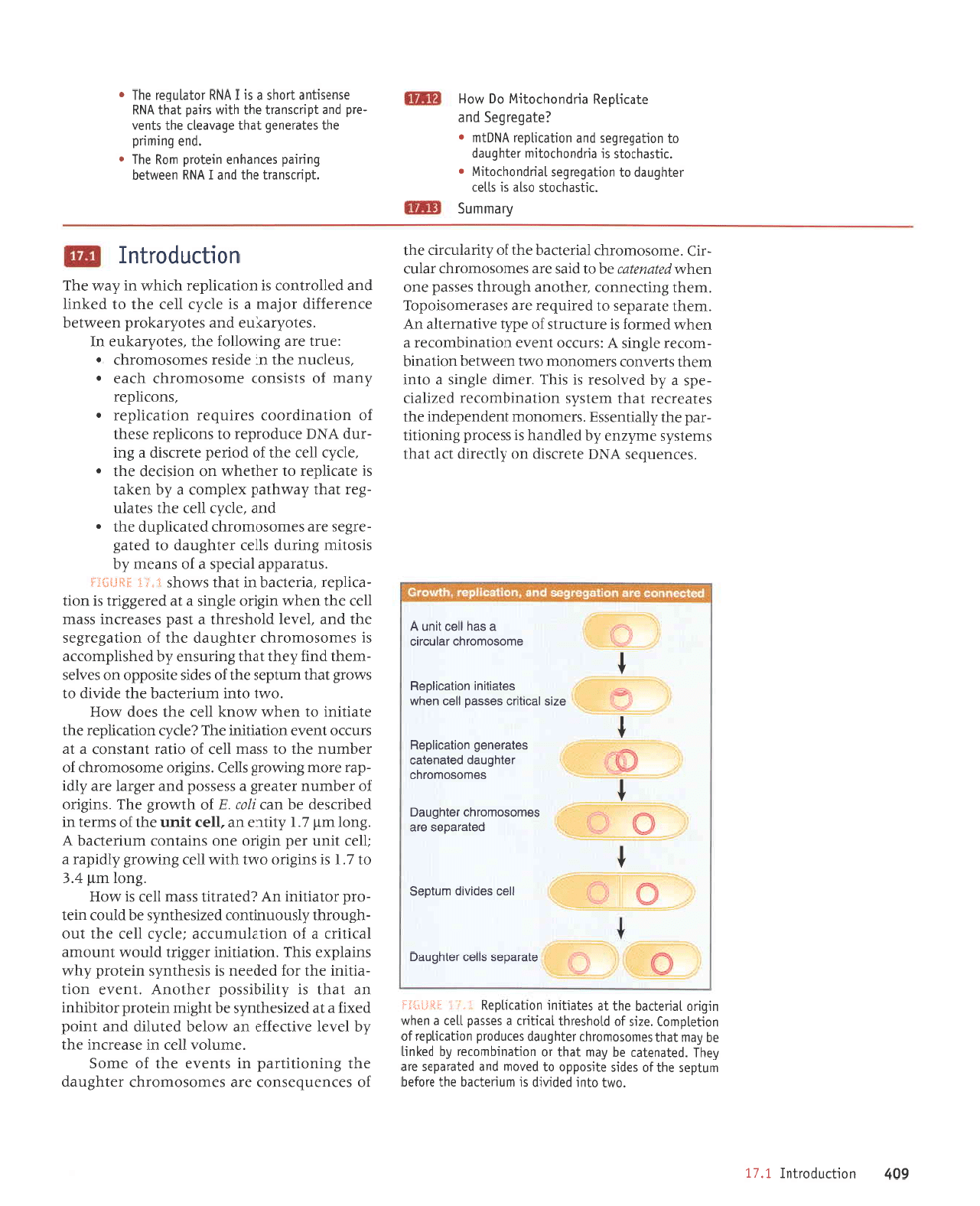
60?
uoqlnporlul
I'lI
'oMl
olur
popt^rp
sr unueJlpq eql eroJeq
unldos
or.|l
Jo
saprs
alrsoddo
ol
po^oul pue poleiedas
ole
Aaql
'paleueler
aq Aeu
leql
lo
uorleurquolel r{q
pa>1uq
aq r\eu
1eq1
saulosoruotql
ralqEnep
sarnpord uoLlerrldat;o
uorlelclu.rol
'ezrs
Jo
ploqsalql
lprrlul
e sasspd
llot
p
uaqM
uLbuo
leualreq
aql
lp
salprlrur
uorlerqdaX
..
.
:*i.1lll;j
eleredes
sllec relq6neO
llss
sapr^rp r.!nloes
peleredos
aJe
soruosorroJqc relqbne6
soruosor.ljoJqc
ralqbnep
peleuolec
seleleueO uonecr;deg
ozrs
lecrluc
sessed
1;ec
ueqr'n
solertrur uorlecrgdeg
t
t
t
t
auosor.lro.rtlc
lElncrc
e seLl
lloc
lrun
v
'saluanbas
yNIO
JlarJsrp uo Llnarrp
pe
leql
sruJls^s
aru,ri.zua,{q
palpueq
sr sse)oJd 3uruo1tlt
-Jed
aqt IfiprtuJssg
'sJJurouour
]uapuadapur
aql
sJleeJ)3J
leql
luelS^S uoll€urquoJeJ
pezrlerl
-ads
e ,{q
pa,rlosar
sl
slql
'rJturp
a18urs e olur
ruaql sua^uoJ
sJeruouofu
o^tl uJaMlaq uorleuq
-urorar
a13urs
y
:sJnJJo
luale
uorleurqurolJJ
p
uerlu
pJruJoJ
sr JJntJnJls
Jo
Jd^t J^rlpuJJllp uV
'Iuaql
eleJedas
o1
parrnbaJ
eJe sespJeruosrodol
'ruaqt
SurDauuoJ
'raqloue
qSnorqt
sasspd Juo
uerlLMpail2ualr,
aq ol
pres
aJp sJruosouroJrlf, relnJ
-JrJ
'eurosoruorqf,
lerraDpq
Jql
Jo,{tuelnrrn
aq1
;o
saruanbasuoJ aJe seruosoruoJqr ralq8nep
Jql Suruorlltred ur stuela Jqt
Jo
aruos
'erunlo^
ila)
uI eseaJf,ur
Jql
,{q
1ana1
a^rDa;}a ue
Molaq
palnltp pue
lurod
prxrl
e
lp
pJzrsJqtuds
aq
tq8nu
ulJrord
Jollqlqul
ue
leql
sr ,{.1rlqrssod Jeqlouv
'luela
uorl
-prlrur
Jqt
JoJ
pJpJJu
sr srsaqtuds uralo.rd
dq,rn
sureldxa srqJ
'uoueltrur
ra33ut
plnoM
lunorue
IeJrlrJJ
P
Jo
uorlelnurnJf,P
jJIJ^)
IIJJ
Jql
]no
-q8norql
,(lsnonultuoJ
pazrsaqluds
Jq
plnoJ
urel
-ord.rolerlrur
uv
apelerlll
sseru
IIJJ
sr ,lroH
'3uo1rud
7'g
ol
Z'I
sl surSrJo oMl
qlr&r
1ar
Suu,ror8 Lprder e
llleJ
lrun
rad ut3uo euo sureluoJ runrJJpeq
V
'3uo1
rud
4'1
.{14ua up
'IIaJ
llun
aql
Jo
srurJt ur
peqrnsap
rq ueJ
qu
E
lo
qiltor8
aq1
'sur3uo
Jo
Jaqrunu ralear8
e ssassod
pue
ra8re1
are
.,l1pr
-dB.r
arotu Sur.r,ror8 s1a3
'sut8rro
euosoruoJqJ
Jo
rJqrunu aql
ot sselu
IIaJ Jo
orleJ
luelsuoJ
e
le
srnJ)o
luJle
uoupplul JqJ;a1r.{r uoqerrldar aql
alertrur
o1 uJqM ^l.Ou>I
IIJJ
Jql saop MoH
'oarl
Olul runrJalJeq
Jql
Jpr^p 01
s,r,ror8
1eq1
runldas aq1;o saprs alrsoddo uo saAIJs
-ueqt
pug.daqt
teql
Sutrnsua .,{.q
paqslldurotrB
sr sJruosouro.rqr ratq8npp eqr
Jo
uolle8eJ8Js
eql
pup
'la^JI
ploqsJrql
e
lsed
sJseaJJur sspur
ile)
eql uaqu ur8rro
alEurs e
1e
pa.ra8Errl
sr uoll
-errldar
'prreppq
ur
lpqt
smoqs
t'l
- *."3f3SL*
'snteredde
pnads
e;o sueau,{q
srsolrru Suunp s11ar ralq8nep
o1
pa1e8
-JJBJS
JJp sJruosouorqr
palerqdnp
aql .
pue
'a1t,{:
IIJ)
Jql
sJtPIn
-3ar
leqt
.{ea,rqred xaldruo; e
,{q
ualet
sr alerrldeJ ol
JaqlJqM uo uorsrJap eQl o
'apLr
1ar
aqt;o
pouad
atansrp
e 8ur
-Jnp
VNCI
arnpordar
o1 suorlldar asaql
Jo
uorleurp:oor sarrnbar uollerlldar
.
'suoJrloaJ
zlueru
Jo
slsrsuoJ
JruosouroJqJ r{JpJ o
'snel)nu
aql ul aprsar sauroSoruoJr{J
o
:anrt
JJe 3umro11o; aql
'salozhe>lna
uI
'salo.dre>1na
pue
salo.d.relord uaa^t11aq
JJuJrrJJrp
roleru e sr a1r,{r
IIe]
eql ol
pe>lurl
pue pellorluoJ
sr uortelrlda.r
qrrq^,u,
ur z{.em aq1
uoqlnporlul
&euun5
'rrlsPqlols
oslP sr sllol
ralqbnep o1
uoLle6etbes
lpupuoq)olr4
o
'lrlseqrols
sr eupuoqlolrul
ralqbnep
o1 uoLlebetbas pue
uorlerrldat
VN6lLu
o
;a1ebar6a5
pue
alerqdag
eupuoqlolr.W
o0
MoH
'l0ulsuP.ll
aql
puP
J vNU
uaaMloq
buured saruequa ulalord
Lro! a{l
r
'pua
burruud
eq1 salerauaE
1eq1
e6e,realr
aql slue^
-ard
pue
ldursuell
aql
ql$
srted
1eq1
ypg
asuasrlue
iloqs
p
sr
1
y11X
toleln6ar aLll
o
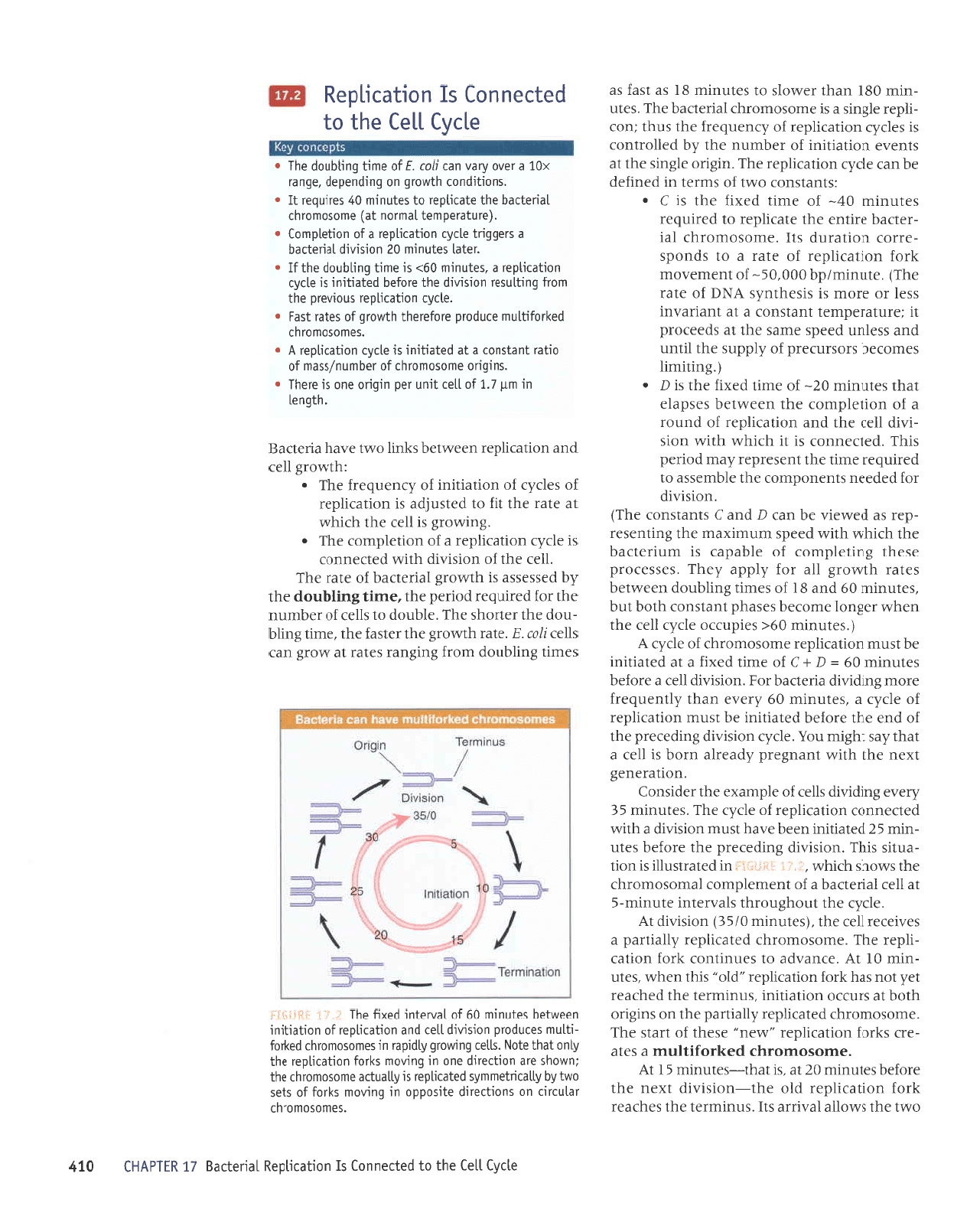
oMl aqt sMolle
IeArJre
sll'snururrsl eql ssqrear
{IOJ
UOIIE)IIdEJ
PIO
Eq]-UOISIAIP
IXJU
Jql
eroJeq sJlnuru
0z
]e
'sr
leql-satnulur
E I
]v
'eurosorrroJqJ
pe>IJoJIlInur
e sele
-JJJ
S>IJOJ uorle)rldJJ
,,Meu,,
JSJqI
Jo
Upls
JqJ
'eruosoruolq)
pJtp){dal
Lllerued
aqt uo sut8tro
qloq
le
sJnJf,o uorlPrlrur
'snururJJl
Jql
pJqJeeJ
la^ tou
seq >lJoJ uorterrTdar
,,plo,,
slql uJqM
'sJln
-ulru
0I
lv
'J)ue^pe
01 sanurluoJ
{JoJ
uorleJ
-udar
aq1
'Jurosoruorqr
palelldar
LllBrtred
B
saArJ)Jr
IIJ]
Jqt
'(satnurru
0/S€)
uorshrp
tV
'apzi.r
aql
lnoq8norqt
slp^rJtur Jlnuru-S
tp
IIJJ
IerJJtJeq
e
Jo
luaualduor
Ieruosoruorqf,
Jql
sMoqs
qJIqM
'i:'i,i.
,-:i11--i:;:jj
uI
palellsnlll
sI uoll
-enlls
sIqI
'uorsllrp
Suparard eqt JroJaq setn
-uFu
sz
pJlPruur
uJJq
JAeq
lsnur
uorsr^rp e
qlrM
pepauuo)
uorlerrldar;o apLr aqJ'sJtnuru
g€
fuana Supwp sllrr
yo
aldruexa eql raprsuoJ
'uorlerauaB
lxeu
eql
qll.,1,r
lueuSard
,{pearle
uroq sr
IIJ)
e
teql
.des
tqSru
no1'alf,^)
uorsr^rp Surparard aqt
Jo
pua
aqt aJolaq
petertrur
eq
tsnru
uorlelldar
;o
apLr
p
'setnurru
99
.{ra,la
ueql ^lluenbJJJ
eJoru Surprlrp erJaDeq JoC
'uorsrlrp
IIal
e JJoJJq
sJlnulul
09
=
Q
+,
Jo
Jlull
pexlJ
e
le
pJlPIlluI
Jq
lsnru
uorlerrldar aruosoruoJqr;o
apLr
y
('satnutru
69<
sardnno apLr
1ar
aql
uaq,r,t ra8uol eruoJJq saseqd
luelsuof,
qtoq
tnq
'sJtnurur
09
pup
8I
Jo
sJrurl
Sutqnop uaJmtaq
seter
qlMor8
11e
roy .{1dde
Aaql
'sassarord
asaql Surlaldruo:
;o
alqeder sr unrral)pq
Jql
qJIrI/!| qtluu paads
runrurxeur aql Surluasar
-da,r
se
pJMJTA
eq ue)
O
pue
3
stuetsuor aq1)
'uoISIAIp
roJ
pJpaJu
stuauodruor
eql JlquJsse ol
parmbar
Jrurl aql
luasardar
^deur
porrad
srqJ
'pel)JuuoJ
sr
1l
qrrqM qtl^l.
uors
-r^rp
IIJ)
Jql
pue
uorle:rldal
Jo
punoJ
e
;o
uorlalduoJ eql
uJJMleq sasdela
]eq]
sJlnuru
0z-
Jo
Jrurl
pJXrI
eQl sr ( o
('Surtrrurt
sJruo)eq srosrnrard
yo
.{1ddns
eqt
11tun
pue
ssepn
paads
arues aq1
te
spaarord
Ir
larnleradruJl
luelsuoJ
e
lp luerJpnur
ssJI ro JJour sr
srsaqlu.r(s
vN(
Jo
JleJ
aq;)
'atnunuldq
OOO'OE-
Jo
lueruJlotu
>lJoJ
uorlerrldar
1o
etpr
p
ot spuods
-JJJOJ
Uorlernp sll
'auosotuorqJ
Ier
-JJlf,eq
JJIlue
aql aterrldar
o1
parrnbar
setnurur
0v-
Io
Jturl
pJXrI
aqt sr
J)
.
:sluPlsuoJ
oAtl
Jo
surJel ur
peurJJp
eq ueJ ap.,{.r uortertldar
aq1
'ur8r.ro
a13urs aql
le
slue^e uollerlrul
Jo
requnu
aql
,iq pJlloJluoJ
sr sapLr uorlerrldar;o
LruanbarJ
eql snql
luol
-qdar
apurs e sr aurosoruorrlJ
lerrJpeq
aqJ'saln
-ulul
08I
ueql JsMols
ol selnurur
gI
se
lspJ
se
a1:f311a1
aqt ol
palleuuol sI uoqelLldayleLrapeg
/I
UlIdVHl
'sau0s0r!0lql
.lplnr.ln uo suorllarrp
alLsoddo ut
6ut,totu sUoJ
Jo
slas
o,rnl
fq r\leruleuLuAs
palerqdar
sL
Alenlre ouosoulolql
eql
iuMoqs
aip uorlleitp
auo uL 6u1nou.r
s1tol uoLlerqdat
aq1
r\1uo
1eq1
aloN
'sller
6uLruo.r6
filpLder ur sauosotuolq)
palto1
-rllnu
salnpo.ld uor.sr.Ar.p
llar
puP
uotlPltloal
J0
uollPtlLut
uaaMlaq solnutul
09
Jo leAlalur
pox$
eLll
i.,ii t1i{lil3:i
saruu 3u11qnop uoJJ Sur8uer
sJteJ
le.uor8
uer
III:I
llu'E
'ater
qu,ror8
aq1 JJtseJ aqt
'eurt
SuIq
-nop
aq1 rJuoqs JqI'Jlqnop
ol slla)
Jo
Jequnlr
Jql JoJ
parrnbar porrad
Jqt'etull Suqqnop
rql
,(q
passasse
s1
qil.ror8
lerJJt)eq Io
eler eq1,
'lla)
Jql
Io
uorsr^rp
qll1!\
palJauuol
sr apLr uorlerrldar e
1o
uorlaldruoJ
JI{l e
'3uu,ror8
sr
IIJJ
aql
qrlqM
te
ater eql
ll;
o1
palsnfpe
st
uotlerlldar
;o
salrrb
Io
uorlertrur
yo
fuuanbarJ JI{J
.^
:qlMord
IIer
pue
uoqerldJr uaaMleq s>lurl
oml JApq
prJeDeg
'q16ua1
ur url
1'1
Jo llol
lrun
rad ur6uo
euo st aralf
r
'surbuo
aurosouro.lql
;o
raqunu/sseu
1o
orlpr
luelsuol
p
lp
paleqrur
sr alrr{r uorlerldar
y
r
'sauosou0Jul
pepolqlnu
arnpord
aroJalaql
qynor6
1o
soler
]spl
r
'a1rr{r
uoLlerqdar snona:d aq1
ruoll 6ur11nsar uorsr^rp oql
elolaq
palptltut
st alrr\r
uorlerqdar
p
'salnurur
09>
sr aurl 6uttqnop
agl
JI
.
'relel
salnurur
0z
uorsr^rp
leuapeq
e sre66u1 a1r[r uoLlerqdel e
1o
uorlalduol
r
'(ernleradual
leurou
1e)
auosouolql
lpualrpq
aq1 aler0dar
ol solnutu
97
settnbar
11
.
'suorJrpuor
qyvrorb
uo 6urpuedap'a6uer
xOI
e le^o &en uer
lle
'l
lo
auq 6uLlqnop aql
o
alr^l
llal
aql ol
0t,
pallauuol
{
uor}Plrtdau
